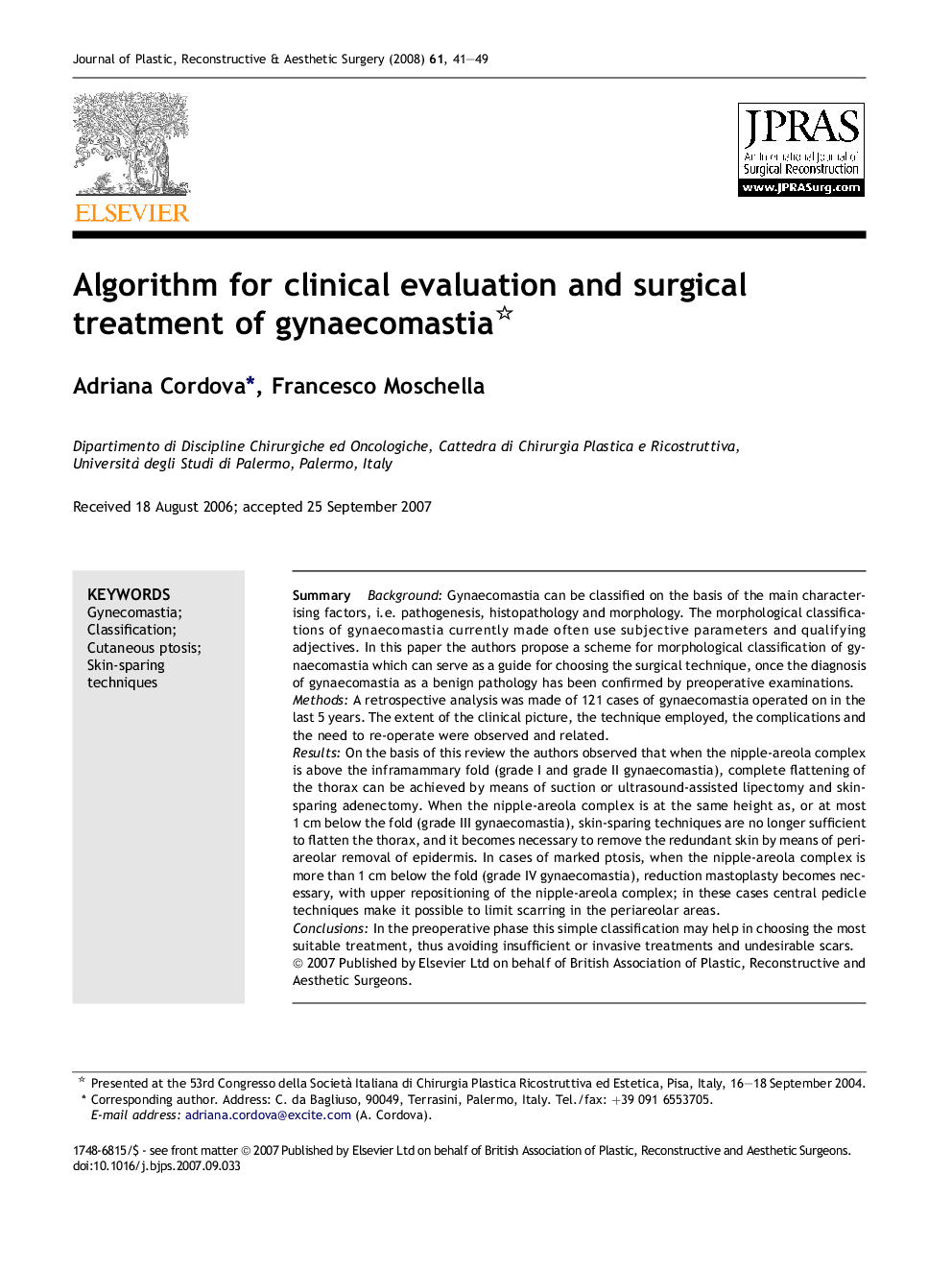| کد مقاله | کد نشریه | سال انتشار | مقاله انگلیسی | نسخه تمام متن |
|---|---|---|---|---|
| 4121012 | 1270383 | 2008 | 9 صفحه PDF | دانلود رایگان |

SummaryBackgroundGynaecomastia can be classified on the basis of the main characterising factors, i.e. pathogenesis, histopathology and morphology. The morphological classifications of gynaecomastia currently made often use subjective parameters and qualifying adjectives. In this paper the authors propose a scheme for morphological classification of gynaecomastia which can serve as a guide for choosing the surgical technique, once the diagnosis of gynaecomastia as a benign pathology has been confirmed by preoperative examinations.MethodsA retrospective analysis was made of 121 cases of gynaecomastia operated on in the last 5 years. The extent of the clinical picture, the technique employed, the complications and the need to re-operate were observed and related.ResultsOn the basis of this review the authors observed that when the nipple-areola complex is above the inframammary fold (grade I and grade II gynaecomastia), complete flattening of the thorax can be achieved by means of suction or ultrasound-assisted lipectomy and skin-sparing adenectomy. When the nipple-areola complex is at the same height as, or at most 1 cm below the fold (grade III gynaecomastia), skin-sparing techniques are no longer sufficient to flatten the thorax, and it becomes necessary to remove the redundant skin by means of periareolar removal of epidermis. In cases of marked ptosis, when the nipple-areola complex is more than 1 cm below the fold (grade IV gynaecomastia), reduction mastoplasty becomes necessary, with upper repositioning of the nipple-areola complex; in these cases central pedicle techniques make it possible to limit scarring in the periareolar areas.ConclusionsIn the preoperative phase this simple classification may help in choosing the most suitable treatment, thus avoiding insufficient or invasive treatments and undesirable scars.
Journal: Journal of Plastic, Reconstructive & Aesthetic Surgery - Volume 61, Issue 1, January 2008, Pages 41–49